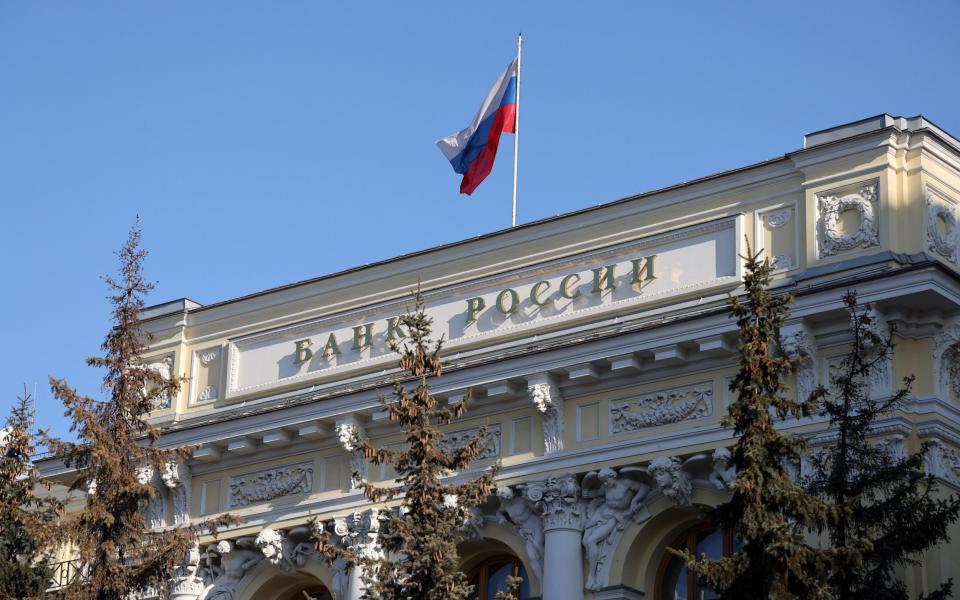What Russia’s debt default means for the world

Russia has defaulted on its foreign-currency sovereign debt after failing to make payments to creditors for the first time in a century. Here are the implications for Russia and the world.
What is meant by a Russian ‘default’?
A sovereign debt default is when a country cannot or will not pay back its national debts, in what can be a major blow for future borrowing prospects.
Russia last month failed to make payments on its foreign-currency sovereign debt – bonds sold to international investors, who had lent Moscow money on the promise of steady repayments over an extended period. It then entered a 30-day grace period which lapsed on Sunday.
Has Russia defaulted before?
Russia has defaulted twice in recent history. The first was in 1918, in the aftermath of the Bolshevik takeover when revolutionaries refused to pay out on tsarist bonds. The second was in 1998 when it restructured debts, but then it defaulted only on domestic borrowing.
Has Russia now defaulted?
Russia had been due to make $100m (£81.5m) of ‘coupon’ payments on May 27, but failed to do so. That triggered a 30-day grace period that lapsed on Sunday, meaning a default has now occurred.
In ordinary times, one of Wall Street’s giant ratings agencies (such as S&P, Moody’s or Fitch) would make the official call that a country had defaulted. But they have had to suspend conducting such assessments due to European Union sanctions.
In their place, holders of the bonds in question can legally determine that a default has occurred if 25pc or more of them agree.
Why did Russia not make the payment?
The default was not for lack or willingness or means on Russia’s part. The country runs a huge trade surplus predominantly because of lucrative oil exports: it exported goods and services worth $58.2bn more than the value of its imports in the first quarter of 2022, according to the Central Bank of Russia. It also has relatively low debt levels.
However, Russia’s coupon payments were rendered impossible by the United States. The Office for Foreign Asset Control – the branch of the US Treasury Department that deals with financial sanctions – had allowed Western investors to continue to receive debt payments as part of the initial volley of sanctions at the start of the war in Ukraine.
That exemption was allowed to lapse last month, meaning payment became effectively impossible.
Russia’s finance minister Anton Siluanov has called the situation a “farce”, claiming it is not a true default but rather a piece of financial engineering by the White House. Russia has tried to pay creditors with roubles, but doing so violates the bond terms.
What would it mean for Russia?
Recovering from a default can be a slow and arduous process and may be even more complicated for Russia given it is being squeezed out of the global financial system.
The reputational damage can also be heavy. Many investors are bound by covenants preventing them from investing in countries deemed to be in default. If it cannot rebuild its reputation as a borrower, Russia may find there is limited interest next time it tries to tap international markets, although it isn’t expected to do so for some time.
The process will be unusual in this case. Countries usually default because they are destitute. That isn’t the case for Russia. Its fiscal strength means investors may be very willing to rehabilitate Moscow when, or if, it returns to Western markets.
The bigger impact may prove to be on Russia companies, which are more reliant on international funding. Some investors may rule out lending money to such companies as a result of the state-level default.
Who else will be affected?
At the time of the invasion of Ukraine, Russia had $39.7bn of outstanding external debt – comparatively small compared to the US which paid out almost $140bn on sovereign debt in 2020 alone. About half is held by foreigners. Another 3 trillion roubles of domestic debt is held by foreigners, according to pre-war data.
Most of that is held by financial institutions: banks, pension funds, asset managers and hedge funds.
Data from the Bank for International Settlements shows French banks held about $4.5bn of Russian government bonds as of last year, while US lenders held $3.8bn, Austria’s had $3.2bn and Italians $2.6bn. UK banks had just $520m of exposure.
A debt default is typically followed by a period of restructuring, when investors usually lose money. Moody’s estimates investors can expect to receive up to just two-thirds of the bond’s value. Some could respond with legal challenges, although these would face difficulties because Russia will not recognise the jurisdiction of foreign courts.
The documents for the bonds Russia has defaulted on say holders have three years to make a claim following non-payment. Some investors may be tempted to wait it out and see what happens.

 Yahoo Finance
Yahoo Finance 